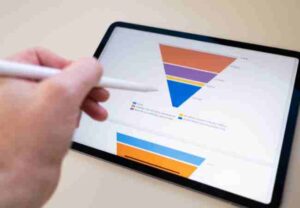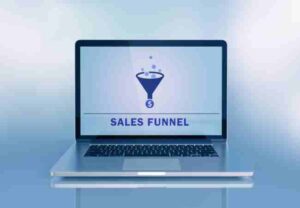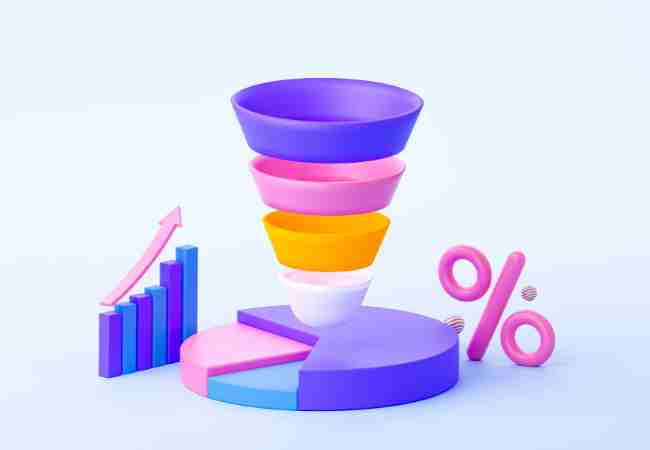Looking to increase your sales potential? Look no further than done-for-you sales funnels. With today’s fast-paced digital landscape, businesses need a streamlined approach to convert leads into paying customers. That’s where sales funnels come in.
A done-for-you sales funnel is a pre-built system that guides potential customers through the sales process, from initial contact to purchase. This efficient and automated strategy takes the guesswork out of converting leads, saving you time and boosting your sales potential.
By incorporating a done-for-you sales funnel into your marketing strategy, you can nurture leads, build relationships, and ultimately drive conversions. With a well-designed sales funnel, you’ll be able to capture the attention of your target audience, educate them about your product or service, and guide them towards making a purchase.
Don’t settle for ineffective lead generation tactics or fumble through the sales process. Maximize your sales potential with a done-for-you sales funnel and start converting leads into loyal customers today.
Understanding the sales funnel concept
To fully grasp the power of done-for-you sales funnels, it’s important to understand the concept behind a sales funnel. At its core, a sales funnel is a visual representation of the customer journey. It outlines the steps a potential customer takes from the moment they become aware of your brand to the point of making a purchase.
The sales funnel can be divided into several stages, including awareness, interest, consideration, and decision. Each stage represents a different level of engagement with your brand, and your goal is to guide potential customers seamlessly through each stage until they become paying customers.
By understanding the sales funnel concept, you can identify areas where potential customers may drop off and make necessary adjustments to maximize your sales potential.
A well-optimized sales funnel ensures that no lead falls through the cracks and that every potential customer receives the attention they need to make a purchase.
The importance of sales funnels in maximizing sales potential
Sales funnels play a crucial role in maximizing your sales potential. They provide a clear roadmap for converting leads into customers and allow you to focus your efforts on the most effective strategies at each stage of the funnel.
One of the key benefits of using a sales funnel is that it helps you identify and address any bottlenecks in the customer journey. By analyzing the data and metrics associated with your sales funnel, you can pinpoint areas where potential customers are dropping off and take steps to improve those areas.
Additionally, sales funnels allow you to automate certain tasks, such as email marketing and lead nurturing. This automation not only saves you time but also ensures that every lead receives consistent and personalized communication, increasing the chances of conversion.
By implementing a well-designed sales funnel, you can streamline your sales process, increase efficiency, and ultimately boost your sales potential. With a clear understanding of your customers’ journey and the right strategies in place, you’ll be able to convert more leads into paying customers.
The components of a successful sales funnel
A successful sales funnel consists of several key components that work together to guide potential customers towards making a purchase. These components include:
1. Lead Magnet
Attracting potential customers to your sales funnel requires offering them something of value in exchange for their contact information. This could be a free e-book, a webinar, or a discount code. The lead magnet should be tailored to your target audience’s needs and interests, compelling them to take the first step into your sales funnel.
2. Landing Page
Once you have captured a potential customer’s attention with your lead magnet, it’s crucial to have a well-designed landing page that converts. The landing page should clearly communicate the value of your product or service and include a compelling call-to-action that encourages visitors to take the next step in the funnel.
3. Email Marketing
Nurturing leads through email marketing is an essential component of any successful sales funnel. By sending targeted and personalized emails to potential customers, you can build relationships, provide valuable content, and gently guide them towards making a purchase.
Effective email marketing requires segmenting your audience, crafting engaging content, and utilizing automation tools to send timely and relevant messages.
4. Upsells and Downsells
Upsells and downsells are powerful techniques for increasing sales within a sales funnel. An upsell involves offering a higher-priced or more advanced version of your product or service, while a downsell offers a lower-priced alternative.
By strategically presenting upsell and downsell offers at the right time in the customer journey, you can increase average order value and maximize your sales potential.
5. Automation Tools
Implementing automation tools can significantly enhance the efficiency of your sales funnel. These tools automate repetitive tasks, such as email follow-ups and lead scoring, freeing up your time to focus on high-value activities.
Automation also ensures that every potential customer receives timely and personalized communication, increasing the chances of conversion.
By incorporating these components into your sales funnel, you can create a highly effective system that maximizes your sales potential and drives conversions.

Creating a lead magnet to attract potential customers
The first step in building an effective sales funnel is to create a compelling lead magnet that attracts potential customers. A lead magnet is a valuable piece of content or offer that you provide in exchange for a visitor’s contact information, typically their email address.
To create a lead magnet that resonates with your target audience, it’s important to understand their pain points, desires, and motivations. Conduct market research, analyze customer feedback, and leverage data to uncover the specific challenges your audience faces and the solutions they are seeking.
Once you have identified the needs of your target audience, create a lead magnet that addresses those needs. This could be an e-book, a checklist, a video tutorial, or any other content format that provides value and helps potential customers overcome their challenges.
To maximize the effectiveness of your lead magnet, ensure that it is easily accessible and prominently displayed on your website or landing page. Use compelling headlines and persuasive copy to communicate the benefits of your lead magnet and encourage visitors to take action.
Remember, the goal of your lead magnet is not only to capture contact information but also to provide a taste of the value you can offer. By delivering a high-quality lead magnet, you establish trust and credibility with potential customers, making them more likely to continue engaging with your sales funnel.
Designing a landing page that converts
Once you have attracted potential customers with a compelling lead magnet, the next step is to guide them to a landing page that converts. A landing page is a standalone web page designed with a single purpose – to encourage visitors to take a specific action, such as signing up for a newsletter or making a purchase.
To design a landing page that converts, consider the following best practices:
1. Clear and Concise Headline
Your headline should clearly communicate the value proposition of your offer and grab the visitor’s attention. Use persuasive language and keep the headline concise and to the point.
2. Compelling Copy
The body of your landing page should provide more details about your offer, highlighting its benefits and addressing any objections or concerns potential customers may have. Use persuasive copy that speaks directly to your target audience and emphasizes the value they will receive.
3. Eye-Catching Visuals
Include relevant and visually appealing images or videos that complement your offer and help engage visitors. Visuals can help communicate your message more effectively and make your landing page more memorable.
4. Call-to-Action
Your landing page should feature a clear and prominent call-to-action (CTA) that tells visitors exactly what you want them to do next. Use action-oriented language and create a sense of urgency to encourage immediate action.
5. Social Proof
Incorporate social proof, such as testimonials, reviews, or case studies, to build trust and credibility. Social proof helps potential customers feel more confident in their decision to engage with your offer.
6. Mobile-Friendly Design
Ensure that your landing page is optimized for mobile devices. With a growing number of users accessing the internet on their smartphones, having a mobile-friendly landing page is essential to maximize conversions.
By following these best practices, you can create a landing page that captures the attention of your target audience and compels them to take action, increasing your sales potential.
Nurturing leads with email marketing
Email marketing is a powerful tool for nurturing leads and guiding them through your sales funnel. By sending targeted and personalized emails, you can build relationships, provide valuable content, and ultimately drive conversions.
To effectively nurture leads with email marketing, consider the following strategies:
1. Segmentation
Segment your email list based on relevant criteria, such as demographics, interests, or previous interactions with your brand. By sending targeted emails to specific segments, you can personalize the content and increase its relevance to each recipient.
2. Welcome Series
When a new lead enters your sales funnel, send them a welcome series of emails to introduce your brand, provide valuable content, and establish a connection. Use this opportunity to set expectations and guide them towards the next steps in the funnel.
3. Drip Campaigns
Drip campaigns are a series of scheduled emails sent to leads over a specific period. These campaigns help nurture leads by providing them with relevant and valuable content at regular intervals.
Use drip campaigns to educate leads about your product or service, address common questions or objections, and gently guide them towards making a purchase.
4. Personalization
Personalize your emails by addressing recipients by their name and tailoring the content to their specific needs or interests. Personalization helps create a sense of connection and makes your emails more engaging and relevant.
5. Automation
Use automation tools to streamline your email marketing efforts. Set up automated workflows that trigger specific emails based on lead behavior or specific actions they take within your sales funnel. Automation saves time and ensures that every lead receives timely and relevant communication.
6. Testing and Optimization
Continuously test and optimize your email campaigns to improve their effectiveness. Experiment with different subject lines, email copy, and call-to-actions to identify what resonates best with your audience. Use analytics and metrics to track the performance of your emails and make data-driven decisions.
By implementing these email marketing strategies, you can nurture leads, build relationships, and guide potential customers towards making a purchase, ultimately maximizing your sales potential.

The role of upsells and downsells in increasing sales
Upsells and downsells are powerful techniques for increasing sales within your sales funnel. These strategies involve offering complementary or alternative products or services to potential customers at strategic points in the customer journey.
An upsell is an offer to upgrade or purchase a higher-priced or more advanced version of the product or service the customer is considering. For example, if a customer is purchasing a basic software package, you can offer them a premium version with additional features and benefits.
A downsell, on the other hand, offers a lower-priced alternative when a potential customer shows resistance to the initial offer. For example, if a customer decides not to purchase the premium version, you can offer them a discounted or stripped-down version of the product that still meets their needs.
Upsells and downsells are effective because they capitalize on the customer’s existing interest and desire to make a purchase. By presenting additional options that enhance or complement their initial choice, you increase the average order value and maximize your sales potential.
To successfully implement upsells and downsells, consider the following tips:
1. Relevance
Ensure that your upsell or downsell offer is relevant and adds value to the customer’s initial purchase. The offer should align with their needs and preferences, providing a logical next step in their customer journey.
2. Timing
Present the upsell or downsell offer at the right time in the customer journey. Ideally, this should be after the customer has expressed interest in the initial offer but before they have completed the purchase. Timing is key to maximizing the chances of acceptance.
3. Value Proposition
Clearly communicate the benefits and value of the upsell or downsell offer. Highlight how it enhances the customer’s experience or solves additional pain points. Use persuasive language and compelling visuals to make the offer enticing.
4. Limited-Time Offers
Create a sense of urgency by presenting the upsell or downsell offer as a limited-time opportunity. This can motivate customers to make a decision quickly and increase the chances of acceptance.
5. A/B Testing
Experiment with different upsell and downsell offers to identify what resonates best with your audience. Test different price points, package combinations, and messaging to optimize your conversion rates.
By strategically implementing upsells and downsells within your sales funnel, you can increase average order value and maximize your sales potential.

Implementing automation tools for an efficient sales funnel
Automation tools play a crucial role in creating an efficient and effective sales funnel. These tools streamline repetitive tasks, automate communication, and provide valuable insights to optimize your sales process.
Here are some key automation tools to consider for your sales funnel:
1. Customer Relationship Management (CRM) Software
A CRM system helps you manage and track customer interactions throughout the sales funnel. It allows you to store customer data, track communication history, and segment your audience for targeted marketing campaigns.
A CRM system provides a centralized platform to streamline your sales process and improve customer relationships.
2. Email Marketing Automation
Email marketing automation tools enable you to set up automated email campaigns based on predefined triggers or customer behavior. These tools allow you to send personalized and timely emails to nurture leads, follow up with customers, and deliver targeted content. Automation ensures that every lead receives the right message at the right time, increasing the chances of conversion.
3. Lead Scoring
Lead scoring tools help you prioritize and qualify leads based on their engagement and behavior. By assigning scores to leads based on specific criteria, such as email opens, website visits, or content downloads, you can identify the most qualified leads and focus your efforts on those with the highest potential for conversion.
4. Social Media Management Tools
Social media management tools simplify the process of scheduling and publishing content across multiple social media platforms. These tools allow you to plan and automate your social media posts, engage with your audience, and monitor social media conversations related to your brand.
By automating social media tasks, you can save time and ensure consistent and timely engagement with your audience.
5. Analytics and Reporting Tools
Analytics tools provide valuable insights into the performance of your sales funnel. They track key metrics, such as conversion rates, customer acquisition costs, and ROI, allowing you to identify areas for improvement and make data-driven decisions.
By analyzing the data, you can optimize your sales funnel for maximum efficiency and effectiveness.

Conclusion: Taking your sales potential to the next level
In order to maximize your sales potential with a done-for-you sales funnel, it’s crucial to implement automation tools that can streamline the process. Automation tools allow you to automate repetitive tasks, save time, and ensure a consistent and efficient sales process. Here are some key automation tools to consider:
1. Email Marketing Software
Email marketing software is an essential tool for building and nurturing relationships with your leads. With this tool, you can automate email campaigns that deliver targeted content to your leads based on their behavior and interests. By personalizing your emails and providing valuable content, you can engage your leads and guide them through the sales funnel.
2. Customer Relationship Management (CRM) System
A CRM system is a centralized database that helps you manage and track your interactions with leads and customers. It allows you to store important contact information, track communication history, and monitor sales opportunities. With a CRM system, you can ensure that no leads fall through the cracks and easily identify potential sales opportunities.
3. Landing Page Builder
A landing page builder is a tool that allows you to create and optimize landing pages specifically designed to convert leads. With a landing page builder, you can easily create visually appealing and high-converting landing pages without any coding skills.
By optimizing your landing pages with compelling copy and persuasive call-to-action buttons, you can capture the attention of your leads and encourage them to take the desired action.
Implementing these automation tools will streamline your sales funnel, saving you time and effort while maximizing your sales potential. By automating repetitive tasks and personalizing your communication, you can nurture leads and guide them towards making a purchase.


hey there and thank you for your info – I’ve certainly
picked up something new from right here. I did however expertise some technical points using
this site, as I experienced to reload the web site lots of times
previous to I could get it to load properly. I had been wondering if your hosting is OK?
Not that I’m complaining, but sluggish loading instances times will sometimes
affect your placement in google and could damage your quality score
if ads and marketing with Adwords. Anyway I am adding this RSS to my e-mail and could look out
for a lot more of your respective interesting content.
Ensure that you update this again soon.. Lista escape room
I like this blog it’s a master piece! Glad I noticed this on google.?
tipobet porn
child porn
child porn